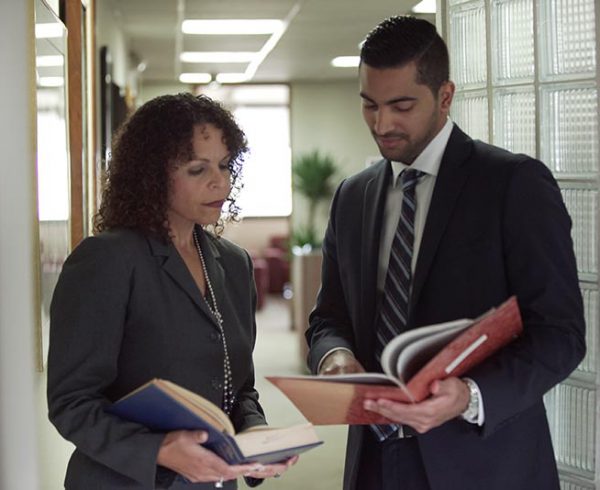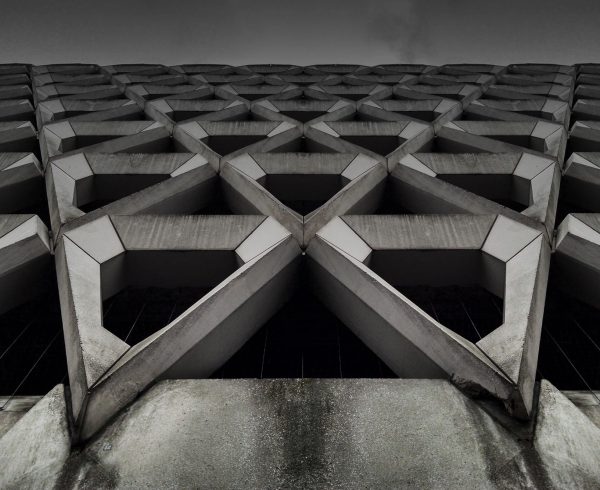Because of Hurricane María, hundreds of vessels in the Caribbean suffered total loss or substantial damages. Some were damaged after being impacted by boats that broke loose from their moorings due to the negligence of their owners. These incidents have given rise to a material number of claims against the owners of the breakaway vessel and their insurance carriers. Many of these claims are being denied under the inevitable accident or “Act of God” defense. The insurers’ contention, irrespective of any other circumstances or negligence of the owners of the vessel adrift, is that the damages were caused by a catastrophic natural event or force majeure; an unavoidable accident because, allegedly, no amount of reasonable care on the part of the owner could have prevented the damages.
This paper analyzes the Act of God defense and its applicability, or lack thereof, in accidents during Hurricane María, where a vessel adrift caused damages to a moving vessel or a stationary object, including a moored vessel. The former is considered a collision and the latter an allision.[1]For purposes of expedience, we will be referring to both as collisions. In general, we conclude that the defense is not absolute. Each case needs to be analyzed on its facts and circumstances. In order to exonerate the party that claims the benefit of the defense, the following need to be considered: the foreseeability of the when, where and fury of the hurricane; the time to prepare in the circumstances; whether the owner of the vessel adrift used all reasonable means and precautions to protect against, prevent or mitigate the dangers posed by the hurricane. In addition, the injury causing party must have not been negligent or the hurricane was of such nature that the accident would have happened even if due care would have been taken. Absent said requirements, the Act of God defense will not prosper. These factors and the circumstances of Hurricane Maria leads us to conclude that the owners of breakaway vessels and their insurance carrier may well be held liable for the damages caused by the drifting or loose vessel to moored boats and/or other stationary property; and the Act of God defense will not exonerate their fault.
I. The Maritime Negligence Cause of Action
An accident involving a vessel on the navigable waters of the United States and which meets the locality and nexus tests gives rise to a tort claim in Admiralty under the jurisdiction of the United States District Courts.[2]Liability would, of course, depend on fault/negligence.[3]In other words, the claimant would have to prove the elements of duty, breach, causation and injury by a preponderance of the evidence.[4]
II. Presumption of Fault in Collision Cases – the Louisiana Rule
In the usual land-based tort case, the claimant has the burden of proving, with a preponderance of evidence, that the defendant was negligent, that it suffered damages and that defendant’s acts, or omissions were the proximate cause of the damages being claimed. See note 3, ante. However, this is not the case in a collision caused by an adrift vessel. A prima faciecase is established when it is proven that a drifting or breakaway vessel collided with a moored vessel and/or a stationary object. It is a long-established norm in maritime law that under those circumstances the moving vessel is presumed to be at fault.
The collision being caused by the Louisiana drifting from her moorings, she must be liable for the damages consequent thereon, unless she can show affirmatively that the drifting was the result of inevitable accident, or a vis major, which human skill and precaution, and a proper display of nautical skill could not have prevented.[5]
This presumption is known as the Louisiana Rule and creates the presumption that the vessel moving or drifting due to an external force, such as the current or the wind, was negligent[6]. It shifts the burden of proof to the owner of the breakaway vessel, who then has to overcome the presumption that it was its fault/negligence that caused claimant’s damages.[7]
This presumption operates to shift the burden of persuasion onto the moving ship. The presumption derives from the common-sense observation that moving vessels do not usually collide with stationary objects unless the moving vessel is mishandled in some way. Delta Transload, Inc. v. MV Navios Commander, 1988 AMC 1155, 1161, 818 F.2d 445, 449 (5 Cir. 1987). It stems also from the observation that “any evidence of actual negligence, or the lack of it, is likely to be known only to the persons on board who are in the best position to either keep damaging evidence hidden or bring favorable evidence forward.” United States v. Merchant Mariner’s License No. 008075 (Joseph J. O’Connell), Decision of the Vice-Commandant No. 2465, p. 8 (1981). The presumption is universally described as “strong,” id., and as one that places a “heavy burden” on the moving ship to overcome. Bunge Corp., 1977 AMC at 2114, 558 F.2d at 795.[8]
The presumption is “strong” in the sense of imposing a burden of persuasion upon the defendant, and not just a burden of production or of going forward.[9]Before activating the presumption, the injured party has to establish a prima faciecase of negligence.10A breakaway of a vessel establishes that prima faciecase.11The presumption operates not just against the ship, but against all parties who participated in the management of the vessel.[10]
Once it is demonstrated that the loose vessel impacted the moored or anchored vessel or the stationary object and caused damages, the presumption of fault comes into being. The owner or person in control of the vessel has to rebut that presumption or be found liable. “The burden of proving absence of fault is upon a vessel which breaks from her moorings and drifts on and collides with moored vessels.”[11]
III. Rebutting the Presumption
The presumption is rebutted only by proving that: (1) the allision was the fault of the stationary object; (2) the moving vessel acted with reasonable care; or (3) the accident was the result of an inevitable accident.[12]These three defenses are the equivalent of contributory negligence, denial of negligence, and superseding causation, respectively. And, any one of these defenses by itself, if sustained, is sufficient to defeat liability.[13]
Of the three defenses to the presumption, we will limit the discussion to (a) the owner of the loose vessel acted with reasonable care, and (b) the accident was the result of an Act of God.
A. Applicable Standard of Care
Considering the context in which the claims for damages against breakaway vessels have been made as a consequence of Hurricane María, and how they are being denied, this article concentrates on the Act of God defense. However, for purposes of the defense, it must first be considered whether the owner or person in control of the vessel took all the reasonable care under the circumstances. In other words, whether he/she “use[d] all reasonable means and took proper action to guard against, prevent or mitigate the dangers posed by the hurricane.”[14]
The general standard of care in admiralty is based upon “(1) general concepts of prudent seamanship and reasonable care; (2) statutory and regulatory rules; and (3) recognized customs and usages.” Fischer, 508 F.3d at 594 (internal marks omitted). This is commonly understood “to be reasonable care under the circumstances, and not a higher standard.” Id. (citing The Grace Girdler, 74 U.S. (7 Wall.) 196, 203, 19 L. Ed. 113 (1868)). When preparing a vessel before a hurricane, “reasonable care amounts to whether the owner used all reasonable means and took proper action to guard against, prevent or mitigate the dangers posed by the hurricane.” Id. (internal marks omitted).”[15]
In a precise and encompassing decision, the Fifth Circuit has ruled that the standard of care in maritime law requires that defendants “must exhaust every reasonable possibility which the circumstances admit and show that in each they did all that reasonable care required.”[16]
If the defendant demonstrates that as a matter of fact it did take reasonable care under the circumstances (as defined), the negligence presumption is rebutted, and the act of God defense need not be addressed.
B. Vis Major or Inevitable Accident (Act of God)
Since early on in the evolution of humankind, the change of weather was often attributed to divine intervention. The notion that the weather and its consequences were divine, beyond the control of humans, slowly became law and developed into what is now known as an Act of God.[17]This process was described by Justice Musmanno of the Supreme Court of Pennsylvania in Goldberg v. R. Grier Miller & Sons, Inc.[18]
The phrase “act of God” in the sense in which it is interpreted in the legal and commercial world did not have its genesis in the law. It emerged from the chrysalis of the primitive mind groping for comprehension in the primordial misty days when man sought to adjust to the universe and he craved explanation of what to him was unexplainable. In this failure to understand, innate intelligence was supplanted by superstition which proceeded to attribute to the heavens all that could not be spelled out in the blundering, amorphous language of the age. Thus, when the thunder blasted and the horizon cavernously echoed; when the lightning severed the skies in zigzag tumult, man said that God was angry and then if, in the accompanying electric storm, a tree crashed to the ground, man said that the Supreme Ruler had targeted it with a bolt of wrath.
As time passed, persons with cunning and cupidity sought to avail themselves of this superstition in order to avoid a responsibility which was the result of their own failings and neglect. If, for instance, a proprietor neglected to properly maintain a strong bridge over a stream on his land and the bridge broke, drowning a traveler, the proprietor would respond to charges of negligence by stating that rains had swollen the stream and since the rains were caused by God, the proprietor could not be held liable for what God had done.
An Act of God was early on described by the U.S. Supreme Court in The Majestic[19]:
The act of God, said Chancellor Kent (vol. 2, p. 597), means “inevitable accident, without the intervention of man and public enemies”; and again (vol. 3, p. 216), that “perils of the sea denote natural accidents peculiar to that element, which do not happen by the intervention of man, nor are to be prevented by human prudence. A casus fortuituswas defined in the civil law to be, quod damno fatali contingit, cuivis diligentissimo possit contingere. It is a loss happening in spite of all human effort and sagacity.” [20]
The defense has been more broadly defined as “any accident, due directly and exclusively to natural causes without human intervention, which by no amount of foresight, pain or care, reasonably to have been expected, could have been prevented; and/or “a disturbance . . . of such unanticipated force and severity as would fairly preclude charging . . . [Defendants] with responsibility for damage occasioned by the [Defendants’] failure to guard against it in the protection of property committed to its custody.”[21]It “applies only to events in nature so extraordinary that the history of climatic variations and other conditions in the particular locality affords no reasonable warning of them”.[22]”The burden of proving an inevitable accident or an Act of God rests heavily upon the vessel asserting such defense.”[23]The latter must have exhausted “every reasonable possibility which the circumstances admit and show that in each they did all that reasonable care required.”[24]
Accordingly, regardless of the type of “heavy weather,” “it is certain that human negligence as a contributing cause defeats any claim to the ‘Act of God’ immunity[,]” because an “Act of God” is not only one which causes damage, but one as to which reasonable precautions and/or the exercise of reasonable care by the defendant, could not have prevented the damage from the natural event. SeeGILMORE AND BLACK, THE LAW OF ADMIRALTY at 163-64. Indeed, an “Act of God” will insulate a defendant from liability only if there is no contributing human negligence and the defendant has the burden of establishing that weather conditions encountered constituted an uncontrollable and unforeseeable cause by “Act of God.”[25]
“[T]he common denominator”, asserts Mr. Buffalow in his article The Force Majeure Defense — Recent Cases, Boilerplate and Analysis,[26]“in force majeure case law involves evaluation of essential evidence that the party claiming the benefit of force majeure undertook precautions and reasonable preparation to avoid the consequences of a foreseeable condition. It is not sufficient to merely contend that the casualty resulted from a severe storm or hurricane.” The case law certainly sustains this premise. “The mere fact that an act of God occurred is insufficient to avoid liability if the damage would not have occurred but for the defendant’s negligence; thus, the party asserting the defense must also show that it ‘took reasonable precautions under the circumstances as known or reasonably to be anticipated.’ Fischer, 508 F.3d at 594”.[27]
Consequently, in order to establish the Act of God or inevitable accident defense there must be no negligence on the part of the injury causing party. “[H]uman negligence as a contributing cause defeats any claim to the ‘Act of God’ immunity…”.[28]
Notwithstanding, there is case law expressing that “[a] party may be deemed negligent yet still be exonerated from liability if the act of God would have produced the same damage irrespective of the party’s negligence. In that case, the party’s negligence would not be deemed the proximate cause of the injury.”[29]This assertion in Warrior, based on a dictumin a non-maritime tort case interpreting superseding cause, creates a contradiction with the elements of the Act of God defense under federal admiralty law.[30]On first impression, it is contrary to the known principle embodied in the presumption of fault in a collision case under maritime law and the Act of God defense, to wit, that negligence on the part of the defendant negates said defense. “[H]uman negligence as a contributing cause defeats any claim to the ‘Act of God’ immunity…”.[31] A closer examination of the case law may allow the reconciliation of the land-based tort principle with that in admiralty. The question is one of causation, to wit, whether the damages were caused by the acts or omissions of the defendant or by the natural event. This is, if the latter was foreseeable but of such force as to have rendered futile any due care action or lack thereof on the part of the injury causing party. In other words, the accident would have happened anyway regardless of what the defendant did. In which case, the efficient cause of the damages was the force majeure event and not the human acts or omissions.We have not found a case citing Warriorwhere the Act of God defense was applied exonerating a defendant whose negligence caused the damages. We submit that said dictumin Warrior, if applied at all in a maritime case, it would have to be an exceptional case limited to its specific facts.In any event, the party claiming the defense has to demonstrate what precautions and reasonable preparation needed to be taken to avoid the consequences of a foreseeable condition, and even if taken, they would have been futile.
Consistent with the requisites of the Act of God defense, in order to successfully assert it, the defendant must show that although the event was foreseeable and in the scope of danger[32], all reasonable measures would have been futile.[33]In other words, that the damages caused by the Act of God are irrespective of what the defendant did (reasonable care). The defendant must show that all reasonable measures in the circumstances would not have served to avoid the damages; that the same damages would have occurred irrespective of its negligence.[34]
In summary, the Act of God defense applies only when “(1) the accident is ‘due directly and exclusively to natural causes without human intervention’, and (2) no negligent behavior by the defendants contributed to the accident.”[35]“[T]he purpose of the defense is to relieve a defendant from liability for damages when the following elements are present: (1) the damages claimed were caused by the Act of God, and (2) no amount of prudence or care on the part of the defendant could have prevented the damages from occurring.”[36]
IV. The Foreseeability of the When, Where and Fury of Hurricane María’s Impact on Puerto Rico
Puerto Rico is in the Caribbean basin. As history has shown, by its location, it is prone to being impacted by hurricanes and tropical storms. Hurricane season in the Caribbean begins officially on June 1 and concludes on November 30. María struck the Islands on September 20, 2017, in the peak of the hurricane season. That by itself made Hurricane María foreseeable.
In addition, the advisories and warnings of the U.S. Weather Bureau National Hurricane Center (NHC) on Hurricane María were quite precise, and timely informed the public of its path and fury, as did other forecasting models amply broadcasted in the news and the social media.
The NHC began informing on potential tropical Cyclone Fifteen (later Hurricane María) via Advisory No. 1 on September 16, 2017 at 11:00 am AST.[37]At that time it was located about 755 miles ESE of the Lesser Antilles, moving W or 280° at 22 mph, with maximum sustained winds of 35 mph. At 5:00 pm, Advisory No. 2 was issued, and it was announced that the depression had become Tropical Storm María, located then about 620 miles ESE of the Lesser Antilles with maximum sustained winds of 50 mph, moving W or 275° at 20 mph. Two more advisories were published that day, the last at 11:00 pm.
On Sunday September 17, the NHC published eight Advisories, beginning at 2:00 am. The Storm continued on its W course or 280° at 16 mph. At 5:00 pm, NHC issued another advisory classifying the storm as Hurricane Maria with maximum sustained winds of 75 mph, located about 140 miles ENE of Dominica, moving WNW or 285° at 15 mph towards the Lesser Antilles. During that day, the NHC issued eight further advisories informing the location, strength, movement and speed of the Hurricane. The last of the day was at 11:00 pm, informing that María was forecast to be become a major Hurricane. At that time, it was located About 210 miles ESE of Dominica, moving WNW or 290° at 13 mph with maximum sustained winds of 85 mph.
By Monday September 18, Hurricane Maria was continuing to strengthen being forecasted to become a major hurricane about to impact the Leeward Islands. Maximum sustained winds now reached 125 mph. It continued moving on a WNW or 290° direction. At 5:00 pm, an advisory informed that Maria had become an extremely dangerous Category 4 hurricane with sustained winds of 130 mph, moving WNW or 290° at 9 mph, and expected to pass Dominica in the next few hours. A hurricane warning was then issued for Puerto Rico, Culebra and Vieques. At 7:45 pm NHC published an update informing that “Air Force Reserve hurricane hunter aircraft data indicate Hurricane Maria has intensified into an extremely dangerous Category 5 hurricane on the Saffir-Simpson Hurricane Wind Scale with maximum winds of 160 mph (260 km/h) with higher gusts.” It continued moving WNW or 290°, at 9 mph.
On Tuesday September 19, at 5:00 am NHC issued an advisory alerting that “extremely dangerous Hurricane Maria headed for the Virgin Islands and Puerto Rico”, with sustained winds of 155 mph, and moving WNW or 300° at 9 mph. At 8:00 am yet another advisory was issued advising that “potentially catastrophic Hurricane Maria continues West-Northwestward [300º at 9 mph] toward the Virgin Islands and Puerto Rico”, with sustained winds of 155 mph, and located about 205 miles SE of Saint Croix. A hurricane warning was in effect for Puerto Rico, among other islands. At 11:00 am, on the 19 the NHC alerted the public that” potentially catastrophic Hurricane Maria continues West-Northwestward toward the Virgin Islands and Puerto Rico…preparations against life-threatening storm surge and rainfall flooding and destructive winds should be rushed to completion…” It continued moving WNW or 300° at 10 mph, with maximum sustained winds of 160 mph, located about 170 miles from St. Croix. Similar Advisory was issued at 2:00 pm. Again, alerting that “preparations against life-threatening storm surge and rainfall flooding and destructive winds should be rushed to completion.” Updates on the same tenor were issued during that afternoon at 2:15, 3:00 and 4:00. At 5:00 pm, dire warnings as to the fury of Hurricane María were issued with instructions that preparations should be rushed to completion. The hurricane continued its WNW or 300° movement at 10 mph, with sustained winds of 165 mph.
As per NHC update of Wednesday September 20, at 4:00 am, Hurricane María’s eyewall was over Vieques, Puerto Rico; and a sustained wind of 68 mph with a wind gust to 83 mph was reported in Fajardo, Puerto Rico. At 5:00 am the core of the hurricane was nearing Puerto Rico, moving NW or 305º at 10 mph. At 6:00 am it was reported that “a sustained wind of 76 mph (122 km/h) with a wind gust to 99 mph (159 km/h) was recently reported at Del Rey Marina, Puerto Rico.” An update by the NHC at 6:35 am informed that satellite images and surface observations indicated “that the center of Hurricane Maria made landfall near Yabucoa, Puerto Rico, around 6:15 am AST. And, that “A sustained wind 60 mph (96 km/h) with a wind gust to 113 mph (182 km/h) was recently reported at Yabucoa Harbor, Puerto Rico.” It was also reported that at Yabucoa Harbor the water level was 4.3 ft above Mean Higher High Water. The movement continued to be WNW or 305º at 10 mph. At 8:00 am the eye of the hurricane was located over Eastern Puerto Rico.
NOAA published the maximum wind gusts and storm surge for Puerto Rico during Hurricane María. See, https://www.weather.gov/images/sju/Huracanes/Maria/Winds_HMaria.JPG, and https://www.weather.gov/images/sju/Huracanes/Maria/Surge_ArcGIS.PNG, respectively.
V. Conclusion
Many allisions/collisions occurred in Puerto Rico during Hurricane María, causing damages to moored or anchored vessels and stationary property. Based on the case law and facts above described, the following are the relevant matters to consider in determining whether the owner of a drifting vessel is liable for the damages caused to moored boats and/or other stationary property.
A. Standard of Care
The standard of care for a boat owner when preparing for a hurricane, is reasonable care under the circumstances, i.e. the owner used all reasonable means and took proper action to guard against, prevent or mitigate the dangers posed by the foreseeable hurricane.
B. Prima Faciecase of Allision
The injured party must first establish a prima facienegligence case by demonstrating that the damages were caused by a vessel loose of its moorings.
C. Presumption of fault in accidents caused by a breakaway or adrift vessel
Once a prima faciecase of collision is demonstrated, under the Louisiana Rule, the owner of the loose vessel is presumed at fault. The burden of persuasion then shifts onto the breakaway or adrift ship. In other words, absent evidence to the contrary, once the collision is stablished, the owner of the loose boat shall be held liable for the caused damages.
The presumption is rebutted only by proving that (1) the accident was in fact the fault of the stationary object[38]; (2) the moving vessel acted with reasonable care; or (3) the allision was the result of an inevitable accident (Act of God).
D. The Act of God Defense
The inevitable accident or Act of God has been defined as “An accident, due directly and exclusively to natural causes without human intervention, which by no amount of foresight, pain or care, reasonably to have been expected, could have been prevented.” It “applies only to events in nature so extraordinary that the history of climatic variations and other conditions in the particular locality affords no reasonable warning of them”
For the Act of God defense to be applicable, (1) the hurricane and its intensity must have been foreseeable; (2) there should have been sufficient time to prepare and take reasonable care in the circumstances; (3) the party claiming the benefit of force majeure undertook all precautions and reasonable preparation to avoid the damages; and, (4) that person cannot have acted negligently in the circumstances. It is not sufficient to merely contend that the casualty resulted from a severe storm or hurricane. Each case shall be evaluated on its particular facts and circumstances.
E. Burden of Owner to show reasonable care in the circumstances.
To be exonerated under the Act of God defense, the owner of the adrift vessel has the heavy burden of showing that it used all reasonable means and took proper action to guard against, prevent or mitigate the dangers posed by the hurricane; that it exhausted every reasonable possibility which the circumstances admit. Only if after taking those actions the vessel breaks loose because of the weather condition, then its owner may be released of liability under the inevitable accident or Act of God defense. Even if the natural phenomenon is of catastrophic proportion, if the boat owner fails to demonstrate that it took all necessary precautions, or if it is found negligent, the Act of God defense will not exonerate him/her of fault. In summary, to rebut the presumption applying the Act of God defense, the latter must demonstrate that in preparing for Hurricane María, it used all reasonable means and took proper action to guard against, prevent or mitigate the dangers posed thereby.[39]
In this respect, the where, when, and with what fury María was predicted is an essential element for the applicability of the force majeure defense, irrespective of the intensity of the winds or the surge. Having sufficient time to take the necessary measures to avoid damages in the circumstances, including moving the vessel to another location or making the proper mooring, would be determinative to find defendants not liable under the Act of God defense.
This article has also been published in Amicus, a public policy review of Inter American University of Puerto Rico.









